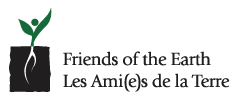Making a difference for bees
It’s an article of faith that a few caring people can change the world. That you or I can make a difference. But when it comes to gardening, we’re being hoodwinked.
By now, we’re all familiar with the havoc wreaked upon bees and other pollinators by a class of pesticide called neonicotinoids. We know the welfare of bees in intimately tied to our food security.
And so it’s only to be expected that the plot of land where one’s decisions reign supreme becomes the battleground on which to make a difference. I’m speaking, of course, about my yard and garden. If governments fail to act to save the bees, I’ll do what I can to give them sanctuary, a safe place full of blossoms across the seasons.
 Friends of the Earth’s report, Gardeners Beware, rocks this plan. Over half the flowering plants tested in eighteen cities in Canada and the United States show levels of neonicotinoids that will harm bees. Plants that should be good for bees like African Daisy and Salvia are treated with neonics, sometimes two different kinds, while they are grown for garden centres. Provinces that have cosmetic pesticide bans have no defence – the federal government provides a loophole for “minor use” for horticulture.
Friends of the Earth’s report, Gardeners Beware, rocks this plan. Over half the flowering plants tested in eighteen cities in Canada and the United States show levels of neonicotinoids that will harm bees. Plants that should be good for bees like African Daisy and Salvia are treated with neonics, sometimes two different kinds, while they are grown for garden centres. Provinces that have cosmetic pesticide bans have no defence – the federal government provides a loophole for “minor use” for horticulture.
So the battleground has to shift to the market place. I am supremely…well, you know, upset, that plants I buy from garden centres to provide a bee sanctuary will end up killing bees. I want a guarantee from my garden centre that plants are bee-safe. I will not buy neonic-laced plants. And if you don’t give me that guarantee, well, no sale.





